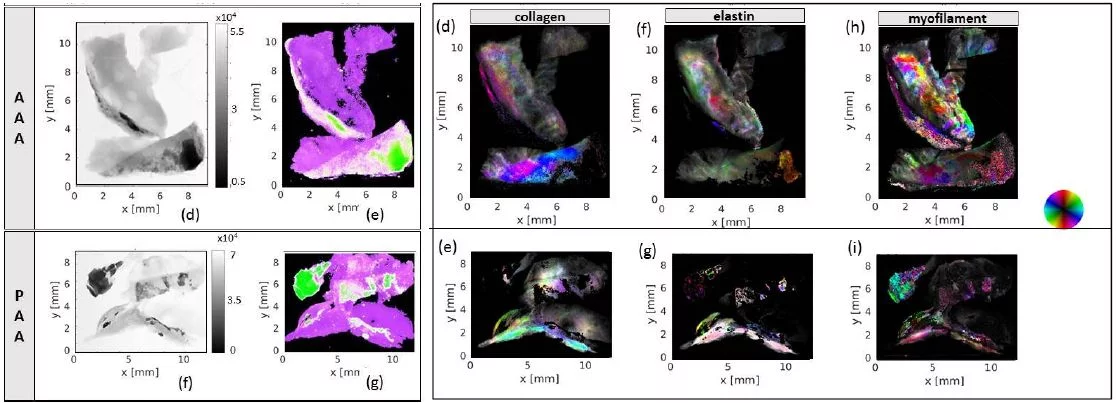Abstract
Abdominal aortic and popliteal artery aneurysms are vascular diseases which show massive degeneration, weakening of the vascular wall and loss of the vascular tissue functionality. They are driven by inflammatory, hemodynamical factors and biological alterations that may lead, in the case of an abdominal aortic aneurysm, to sudden and dangerous ruptures of the arteries. Here, human aortic and popliteal aneurysm tissues were obtained during surgical repair, and studied by synchrotron radiation X-ray scanning microdiffraction and small-angle scattering, to investigate the microcalcifications present in the tissues. Data collected during the experiments were transformed into quantitative microscopy images through the combination of statistical approaches and crystallographic methods. As a result of this multi-step analysis, microcalcifications, which are markers of the pathology, were classified in terms of chemical and structural content. This analysis helped to identify the presence of nanocrystalline hydroxyapatite and microcrystalline cholesterol, embedded in myofilament, and elastin-containing tissue with low collagen content in predominantly nanocrystalline areas. The generality of the approach allows it to be transferred to other types of tissue and other pathologies affected by microcalcifications, such as thyroid carcinoma, breast cancer, testicular microlithiasis or glioblastoma.
Contact
Dr. Oliver BunkPaul Scherrer Institut
E-mail: oliver.bunk@psi.ch
Dr. Cinzia Giannini
Istituto di Cristallografia
Consiglio Nazionale delle Ricerche
E-mail: cinzia.giannini@ic.cnr.it
Original Publication
X-ray scanning microscopies of microcalcifications in abdominal aortic and popliteal artery aneurysmsC. Giannini, M. Ladisa, V. Lutz-Bueno, A. Terzi, M. Ramella, L. Fusaro, D. Altamura, D. Siliqi, T. Sibillano, A. Diaz, F. Boccafoschia, and O. Bunk
IUCrJ (2019). 6, 267–276
DOI: 10.1107/S2052252519001544 (open access)

